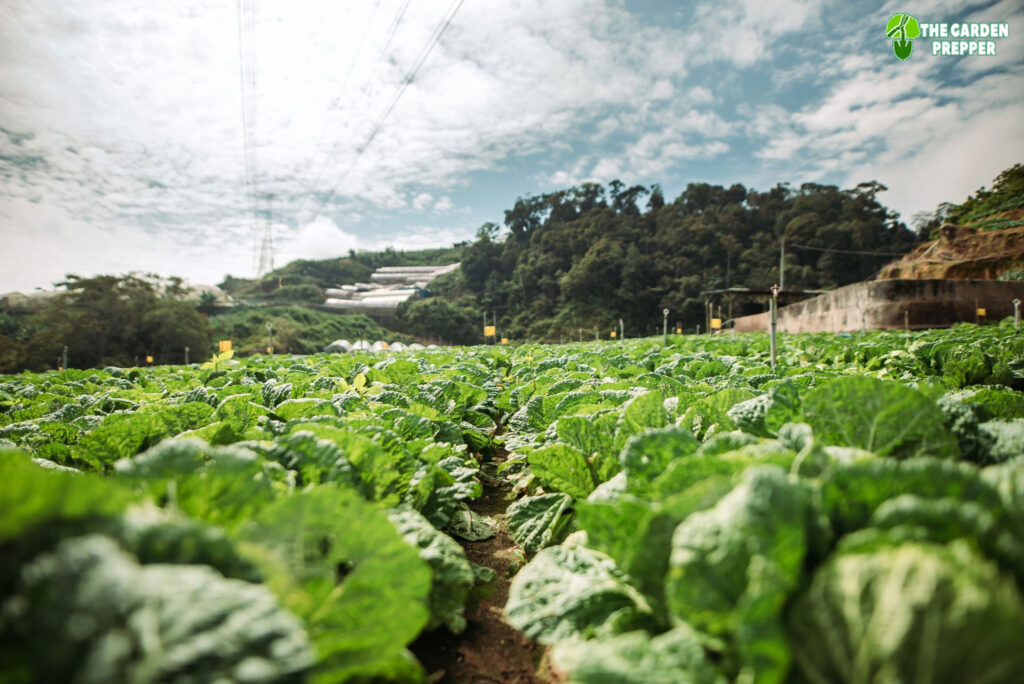Cabbage is a nutritious cool-weather vegetable with a ton of vitamins and minerals we need daily. You can easily get these in a grocery store, but did you know that you can grow these in your own garden?
If you live in a cool-summer area, you can begin sowing cabbage plants during the late spring so you can harvest come fall. For those living in locations with mild winter seasons, you can plant it during the late summer to harvest come winter or spring.
But you might be wondering about how long it takes to harvest cabbage. While it depends on the cabbage variety you have, it would generally take between 80-180 days from the moment you plant the seeds to harvest time. Let’s talk about the cabbage plant growth stages to understand this further!
Cabbage Plant Growth Stages
There are four primary cabbage plant growth stages, which include the following:
1. Germination
Germination is the first developmental stage in the cabbage’s life cycle. You will first plant cabbage seeds in your garden or containers to sprout or germinate after 3-4 days.
Seeds will germinate or begin their lives once they are in thriving conditions, so you must make sure the following are in excellent condition made for cabbage to grow healthily:
- Moisture
- Nutrients
- Temperature between 65-70 degrees F
- Sunlight
- Proper soil nutrients
2. Seedling
The subsequent growth stage happens after 10-14 days of germination. This means that your cabbage seed is transitioning to a baby plant. At the seedling stage, your cabbage plant will develop and grow young seed leaves, radicles (root-like), and stem-like structures. All these structures are called seedlings.
It’s during this stage that your plant will depend on all nourishment it receives from the seed as its young leaves and shoots aren’t developed fully to synthesize food of their own.
3. Vegetative
Once the cabbage seeds are germinated and grew into seedlings, the cabbage plant’s structures will then expand and elongate. This will allow the plant to perform complex physiological activities like absorbing water and nutrients, transpiration, photosynthesis, and distributing nutrients.
This is a developmental phase we know as the vegetative stage. During this stage, the young structures start to grow into mature leaves, roots, and stems. This is when your cabbage plants will need to synthesize their own food using their roots and leaves.
4. Flowering
And finally, we head to the last stage of the cabbage plant growth cycle.
Once the cabbage plant has reached full maturity, it will begin producing flowers, hence this being called the flowering stage. Flowering refers to when your mature plants begin reproducing to preserve generation from seed production. As they produce seeds, the plants will die up, thus ending the life cycle.
To begin the cycle again, you’ll have to plant your cabbage seeds and wait for germination, the first stage. And you keep going!
Wrapping It Up
Just like all types of plants, cabbages have their own growth stages. As long as they are cared for excellently and exposed to the proper conditions and growing environment, you can harvest delicious veggies and continue planting cabbage plants afterward. Surprisingly, their growth stages are pretty simple, and after 3 months max, you can harvest and receive seeds to begin the cycle again.
Hopefully, this article on the cabbage plant growth stages helped you out! Start getting acquainted with how to care for cabbage plants well so you can successfully go through these growth cycles successfully. Happy gardening!
